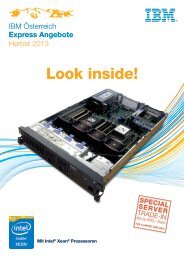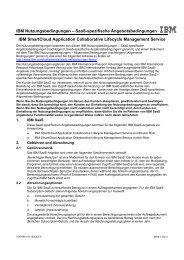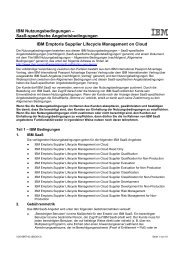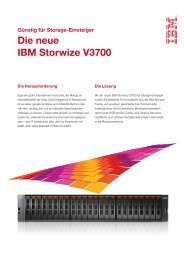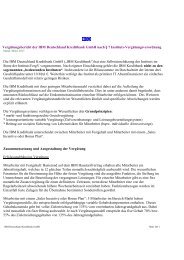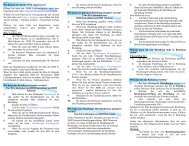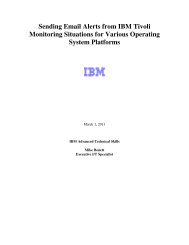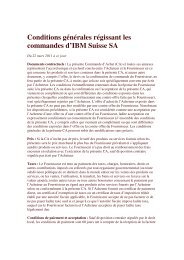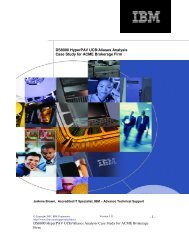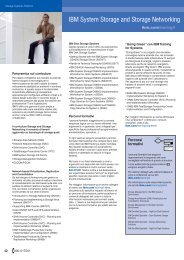FICON Express2 Channel Performance Version 1.0 - IBM
FICON Express2 Channel Performance Version 1.0 - IBM
FICON Express2 Channel Performance Version 1.0 - IBM
Create successful ePaper yourself
Turn your PDF publications into a flip-book with our unique Google optimized e-Paper software.
<strong>FICON</strong> <strong>Express2</strong> <strong>Channel</strong> <strong>Performance</strong> <strong>Version</strong> <strong>1.0</strong><br />
Page 2<br />
Normally customers should keep their channels at 50% or less channel utilization to achieve<br />
good online transaction response times.<br />
Reflected in the right bar chart is the "best can do" capabilities of each of the <strong>FICON</strong><br />
channels in native <strong>FICON</strong> or FC mode measured using an I/O driver benchmark program for<br />
6x27K or 6 half-track reads and writes. This is representative of the type of channel<br />
programs used in disk to tape backup jobs or other highly sequential batch jobs. The original<br />
<strong>FICON</strong> channels run at a link speed of 1 Gigabit/second. <strong>FICON</strong> Express and <strong>FICON</strong><br />
<strong>Express2</strong> channels will auto-negotiate to either 1 Gigabit/s or 2 Gigabit/s, depending on the<br />
capability of the director or control unit port at the other end of the link.<br />
As you can see, the <strong>FICON</strong> <strong>Express2</strong> channel as first introduced on the <strong>IBM</strong> zSeries z890 and<br />
z990 represents a significant improvement in both 4K I/O per second throughput and<br />
maximum bandwidth capability compared to ESCON ® and previous <strong>FICON</strong> offerings.<br />
Please remember that this performance data was measured in a controlled environment<br />
running an I/O driver program. The actual throughput or performance that any user will<br />
experience will vary depending upon considerations such as the amount of<br />
multiprogramming in the user’s job stream, the I/O configuration, the storage configuration,<br />
and the workload processed.<br />
This paper assumes that the reader is familiar with the basic benefits of <strong>FICON</strong> vs. ESCON<br />
technology and will explain in more detail the performance characteristics of <strong>FICON</strong><br />
<strong>Express2</strong> channels running in FC mode (native <strong>FICON</strong>) including DASD I/O driver<br />
benchmark results, CTC measurement results, <strong>FICON</strong> <strong>Express2</strong> channel and ESTI-M card<br />
level measurement results.<br />
Please note that <strong>FICON</strong> <strong>Express2</strong> channels do not support FCV (<strong>FICON</strong> Converter) mode for<br />
attachment to ESCON devices. For an introduction to the basic benefits of <strong>FICON</strong> vs.<br />
ESCON technology and for info on FCV mode performance, please see version 2 of the<br />
<strong>FICON</strong> and <strong>FICON</strong> Express <strong>Performance</strong> white paper on the zSeries I/O connectivity Web<br />
site at the following URL:<br />
www.ibm.com/servers/eserver/zseries/connectivity/


